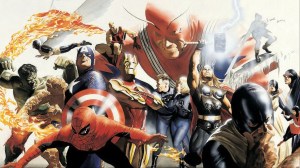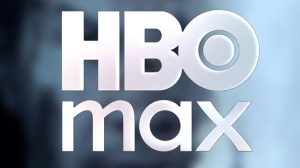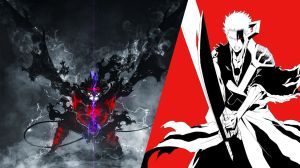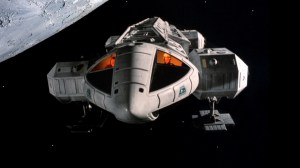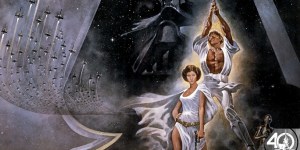Marvel found a way to come back from the tumult of the ’90s in the ’00s. New editor in chief Joe Quesada rebuilt the publisher from the ground up, getting some of the best writers and artists in the comic industry. Quesada helped build the event cycle that dominated Marvel throughout the ’00s, and readers got popular titles and stories like New X-Men, New Avengers, House of M, Civil War, “Planet Hulk”, Secret Invasion, “Enemy of the State”, Ultimate Spider-Man, Ultimate X-Men, The Ultimates, and many, many others. ’00s Marvel wasn’t always perfect — “One More Day” has destroyed the Spider-Man’s fandom’s sanity over the last twenty years — and rose-colored glasses tint the whole decade, but it was a cool time for the publisher, allowing them to take the top sales spot and never let it go.
Videos by ComicBook.com
Going into the ’10s, Marvel had all of the cards and played them. The ’10s saw a lot of problems for the publisher, especially in the publishing initiatives like All-New Marvel NOW! and All-New, All-Different Marvel, but there are also some amazing comics from the decade. From event stories to modern classic runs on the Avengers, Fantastic Four, Thor, Wolverine and more, these ’10s Marvel stories are the best of the decade.
10) Jason Aaron’s Thor’s Saga (The Whole Thing)
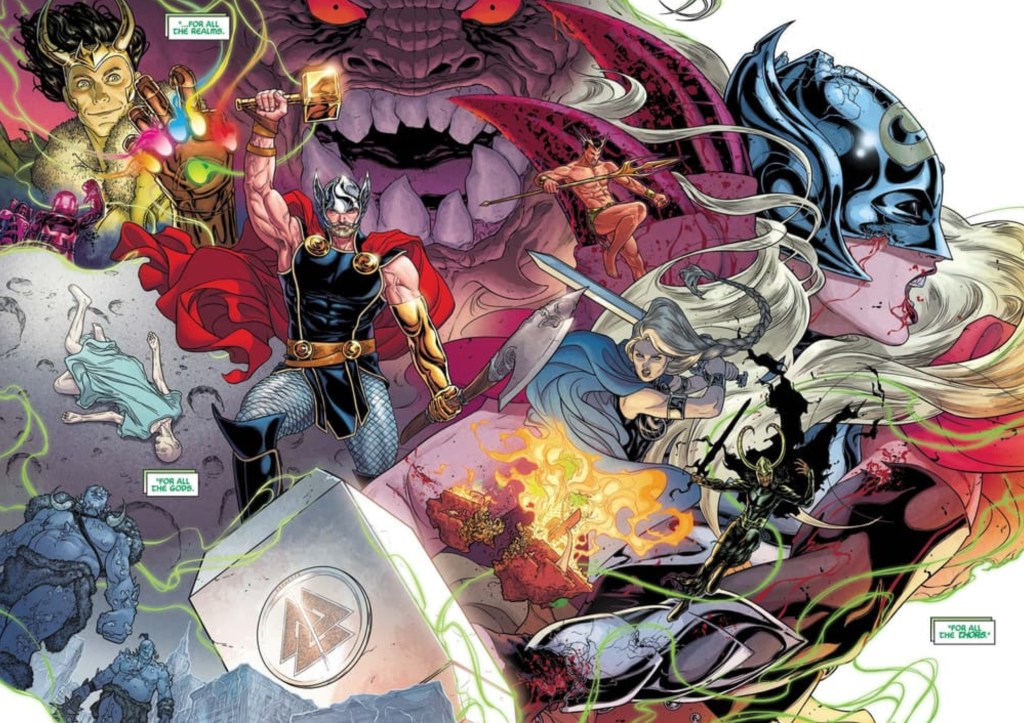
I’m gonna be real — Jason Aaron’s time on Thor is amazing from start to finish. Beginning with Thor: God of Thunder and continuing into The Mighty Thor (Vol. 2) and The Unworthy Thor, Aaron gave readers an amazing story starring the God of Thunder and his successor. Kicking off with “The God-Butcher”, a story that introduced Gorr the God-Butcher, Aaron worked with Esad Ribic, Olivier Coipel, Russell Dauterman, and more, giving readers everything they could ever want fromm Thor. Original Sin (which barely missed this list and I recommend it) took away Thor’s worthiness to Mjolnir, leading to The Mighty Thor (Vol. 2) where Jane Foster took up the mantle of Thor and shot it into the stratosphere. This is peak Thor and it’s nearly perfect. If you’ve never read Thor and want to give the character a chance, then this is where you should start. If you love Thor and haven’t given this chance, you definitely should. It’s Marvel at its finest, and will enthrall any fan out there.
9) Avengers : “Original Sin”
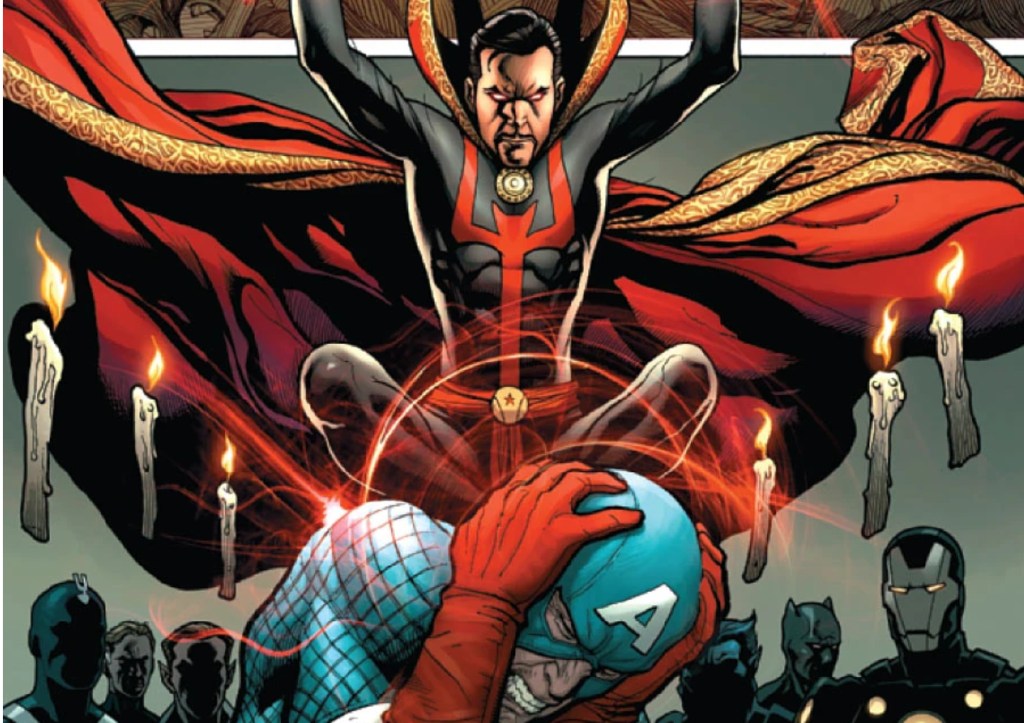
Jonathan Hickman writing the Avengers was perfect, and this is the first story from his time writing Avengers and New Avengers that will land on this list. Avengers (Vol. 5) #29-34, by Hickman and Leinil Yu, is a tie-in to Original Sin, a story that saw the death of the Watcher opening up a whole can of worms, as the terrible secrets of the superheroes are revealed. This story hearkens back to New Avengers #1-4, which saw Captain America join the Illuminati, then get mindwiped after the stopping the first Incursion, which destroyed the Infinity Gauntlet, and telling that group that he would make sure that they didn’t do anything immoral. Cap finally remembers what was done to him and goes after Iron Man with Hawkeye, Black Widow, Thor, and Hyperion. However, the Time Gem returns and throws Cap’s team forward in time. Each issue sees the group show up in different points in the Avengers’ history as they try to figure out what’s going on, how to stop it, and what changes have been made to the Avengers. This is peak superhero sci-fi like only Hickman could write and is one of the best stories from his run.
8) The Red Right Hand Saga

Jason Aaron wrote several stellar runs for Marvel throughout the ’10s. His time on Wolverine helped catapult him higher up the ranks, and his best story on the character is the Red Right Hand Saga. Its three story arcs, “Wolverine Goes to Hell”, “Wolverine Vs. the X-Men”, and “Wolverine’s Revenge” shows off why Wolverine is one of the Marvel’s greatest heroes. Running through Wolverine (Vol. 4) #1-14, with art by Renato Guedes and Daniel Acuna, sees Wolverine’s soul sent to Hell while a demon takes over his body. Logan tries to fight his way through Hell to escape before the demon Wolverine can kill his friends in the X-Men, and his quest for revenge. This is one of those stories that show off just how tough Wolverine can be, but also the tragedies that his anger can drive him to. Aaron is an amazing Wolverine writer (also check out his Wolverine: Weapon X series and the rest of his run through Wolverine (Vol. 4) and beyond), and this story shows off his grasp of the character. The last twist will blow your mind. The art is sensational throughout, as Guedes and Acuna do an amazing job of not only giving readers great action scenes, but great emotional storytelling. This is Wolverine how he should be.
7) Jonathan Hickman’s Fantastic Four/FF Run

Jonathan Hickman got his start at Image, with fantastic comics like The Nightly News and Pax Romana, which got him the attention of Marvel. Hickman wrote books like Secret Warriors and The Ultimates before being given the Fantastic Four and giving readers an epic unlike anything readers had seen in the book, possibly ever. Hickman wrote Fantastic Four (Vol. 1) #570-588, FF #1-23, and back to Fantastic Four (Vol. 1) #600-611 (it’s a bit confusing because the first 12 issues of FF still count towards the numbering of Fantastic Four (Vol. 1) and then the two books split off), working with a small army of artists like Dale Easglesham, Steve Epting, and many more. Hickman is a master of sci-fi, and used this mastery to give readers what is often considered to be the greatest Fantastic Four of the 21st century. Hickman is able to capture that spark that Jack Kirby and Stan Lee did back in the Silver Age, combining big sci-fi concepts and the familial relationship of the Fantastic Four. This run is amazing, and if you loved Fantastic Four: First Steps, this is the next Fantastic Four story you should try (Kirby and Lee’s Fantastic Four is great, but modern new readers need to gain some love for comics before giving it a go; Silver Age books are very different from modern ones).
6) “Avengers World”

Marvel NOW! came in the aftermath of Avengers Vs. X-Men, ending the Brian Michael Bendis era of Earth’s Mightiest Heroes. Many will tell you the Bendis era of the Avengers is amazing, but that’s a bit of a overestimation of it. Bendis was never able to capture the cosmic grandeur of the Avengers, preferring to keep the team grounded, and this turned off some fans (me; I’m some fans, but I’m not alone). Jonathan Hickman getting the helm of the Avengers was the best thing that could have happened and it kicked off with “Avengers World” from Avengers (Vol. 5) #1-3, by Hickman and Jerome Opena. New villains Ex Nihilo and Abyss attack the Earth from Mars, firing evolutionary missiles at six places on the planet. The Avengers sprang into action, but are defeated, except for Captain America. He goes back to Earth and activates the Avengers Machine, a concept that he and Iron Man created to make the most powerful teams of Avengers ever. This three issue story is everything you could ever want from an Avengers comic, and it will make you love the team more than ever. Opena’s art is gorgeous, taking all of the craziness of Hickman’s script and bringing it to life on the page.
5) Infinity
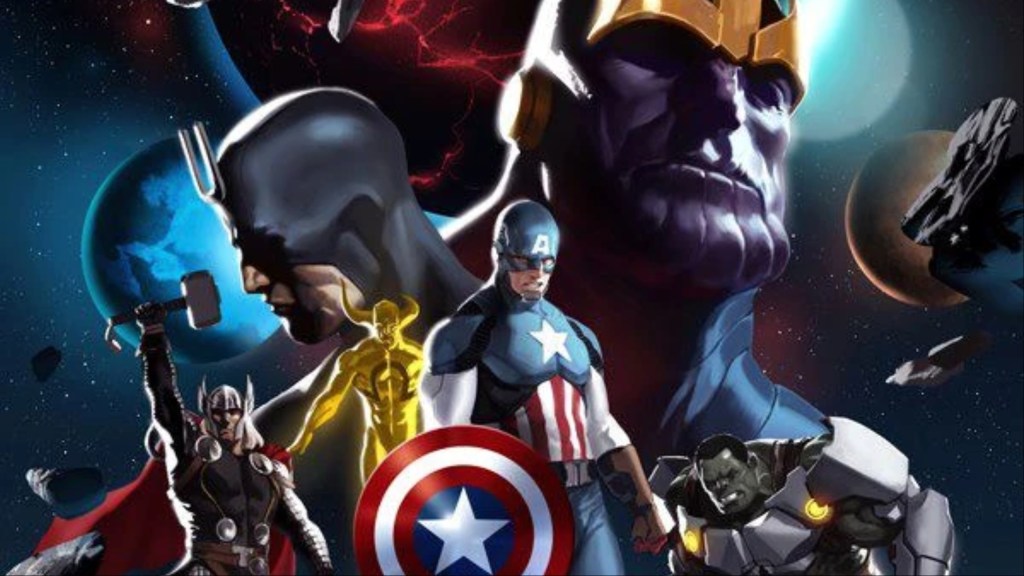
Infinity is yet another story written by Jonathan Hickman — the ’10s was his decade at Marvel. Infinity is the half way point of Hickman’s Avengers saga, as a war in the stars draws the Avengers out to save the various alien empires from the Builders, an ancient force of aliens trying to destroy everything, with Earth as their ultimate target. Meanwhile, Thanos decides to attack the Earth, searching for something he’s been killing his way across the cosmos to get. Infinity #1-6, by Hickman, Jerome Opena, Dustin Weaver, and Jim Cheung, is an amazing story but to really get the full story, I’d also recommend getting Avengers (Vol. 5) #18-23, with artist Leinil Yu, and New Avengers (Vol. 3) #9-12, with artist Mike Deodato. Luckily, most collected editions contain Infinity, Avengers, and New Avengers. This story seriously pushes the envelope of what a sci-fi superhero epic can be, and is an Avengers epic that takes the seeds of “The Kree-Skrull War” and “Operation: Galactic Storm” and makes them blossom into something amazing.
4) New Avengers (Vol. 3) #16-21
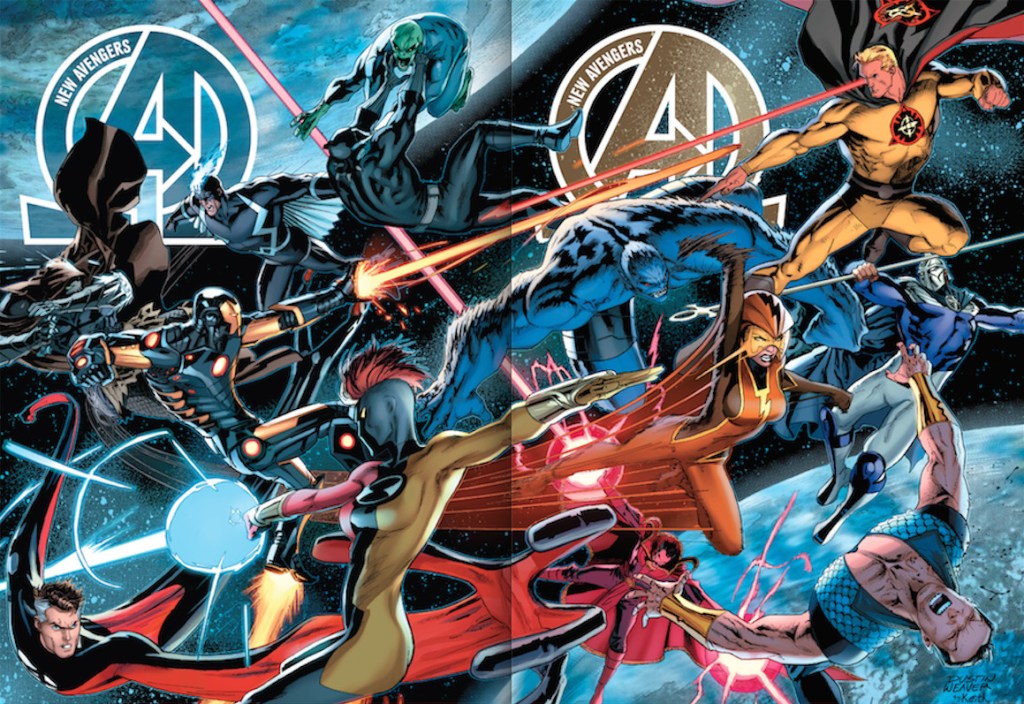
Hickman’s New Avengers (Vol. 3) is the best book named New Avengers ever. I honestly recommend the entire series (as well as Hickman’s Avengers), but the best story in the whole series comes from New Avengers (Vol. 3) #16-21, by Hickman, Rags Morales, and Dustin Weaver. The Illuminati had been dealing with the Incursions since the book started, but each time got lucky and didn’t have to use the anti-matter warheads they had created just in case to destroy the other Earth. Using a new piece of technology called the Bridge, Black Panther and Namor witness the Great Society of Earth-4,209,001, a Justice League pastiche team, as they defeat an Incursion without destroying one of the Earths. This heartens the heroes, but that’s taken away when the next Incursion send them on a collision course with the alternate Earth. This story is the turning point for the Illuminati, and takes the moral argument of New Avengers and drops it right in front of the reader. It’s an excellent story, and will change the way you look at certain members of the Illuminati.
3) House of X/Powers of X
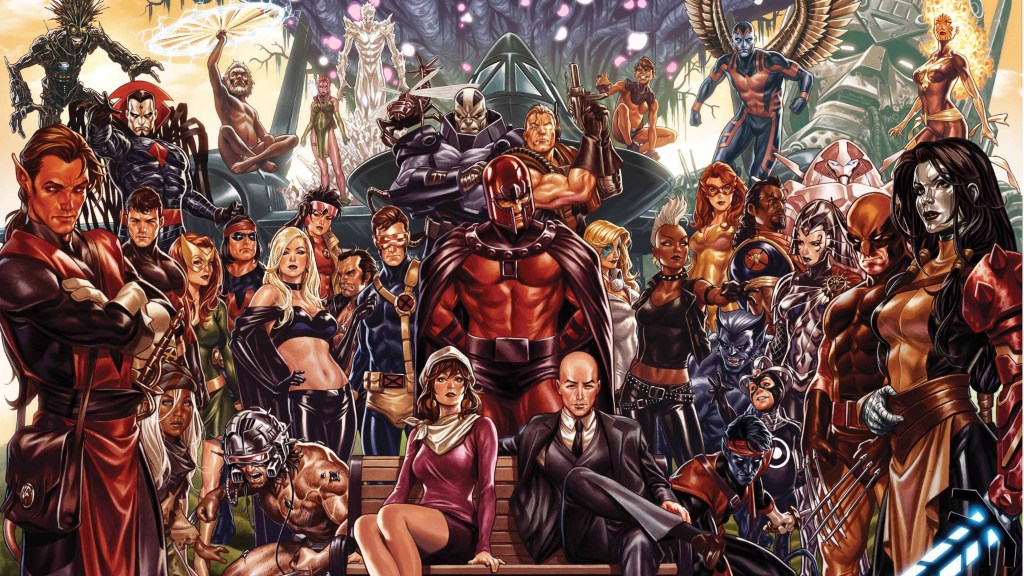
The ’10s were not a good time to be an X-Men fan. Marvel’s lack of film rights to the mutants meant that they pushed the X-Men books off into its own corner. This was a depressing time for fans and character, but once Marvel parent company Disney bought 20th Century Fox, all of that changed. Marvel handed the X-Men to Jonathan Hickman, and we got the brilliant House of X/Powers of X, by Hickman, Pepe Larraz, and R.B. Silva. Magneto and Charles Xavier set a plan in motion that will bring the X-Men and the mutant race to the mutant isle of Krakoa to create their own nation. This mobilizes the Orchis Initiative, a group of made up of the various super-intelligence agencies of the world to destroy the mutant race. House of X deals with the nation-building and conflict, while Powers of X takes readers to the past, present, and future to show how the plan came together and what it could mean for the future. The Krakoa Era fell from grace over the years as it went on, especially when Hickman left. However, House of X/Powers of X is still a fantastic story and you should check it out.
2) The Apocalypse Twins Saga

While Hickman was writing the best Avengers ever, Rick Remender was given his own Avengers book. This one was quite different from the others, though, as Remender created the Avengers Unity Squad, a team meant to bridge the gap between the Avengers and the X-Men. The first story arc, “The Red Shadow” introduced the team — Captain America, Havok, Wolverine, Wasp, Rogue, Thor, Sunfire, Scarlet Witch, and Wonder Man — but the book would hit its stride in Uncanny Avengers #6-23, by Remender, Daniel Acuna, Adam Kubert, and Steve McNiven. This book picked up a thread from Remender’s Uncanny X-Force, as the children of Archangel and Pestilence, who were taken to a future mutant concentration camp by Kang for toughening up for the purpose of destroying the Avengers, unleash their assault on humanity, all while the grudge between the X-Men and Avengers burn the team down from the inside. Much like Hickman’s Avengers, this is big concept Avengers, full of action, twists, and turns that will have you on the edge of your seat. This is the kind of Avengers stories that fans hadn’t had since “The Kang Dynasty” in the early ’00s, and it made a lot of fans very happy.
1) Secret Wars (2015)

Marvel has amazing event comics, and the best of them came out in the ’10s — Secret Wars (2015), by Jonathan Hickman and Esad Ribic. This story is the culmination of both Hickman’s Fantastic Four and Avengers runs, as the Incursions pit Earth-616 against Earth-1610, the old Ultimate Universe. This leads to the destruction of both Earths, but that’s not the end. The next issue opens with an all-new universe, ruled over by God Emperor Doom. However, survivors of the two Earths show up there, and decide to battle against Doom. While it helps if you read Hickman’s Avengers and New Avengers before this story, it’s not actually needed (although it does make them better, and I recommend doing so). Secret Wars (2015) is the only time Marvel ever approached the scope of DC’s Crisis on Infinite Earths, giving readers a cosmic epic they’ll never forget. It’s also a character study of Doctor Doom, showing the strengths and weaknesses of the character. Secret Wars (2015) is a wild ride, and any fan of Marvel will love it.
What do you think are the best Marvel books of the ’10s? Sound off in the comments below.

